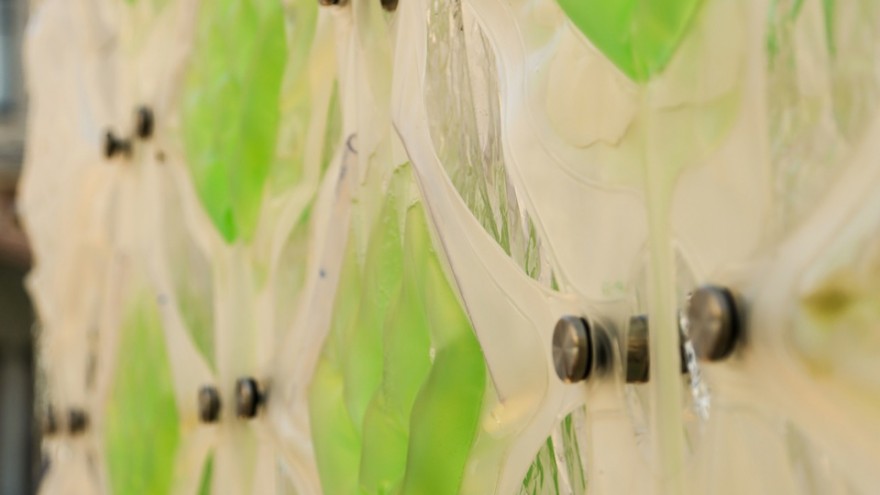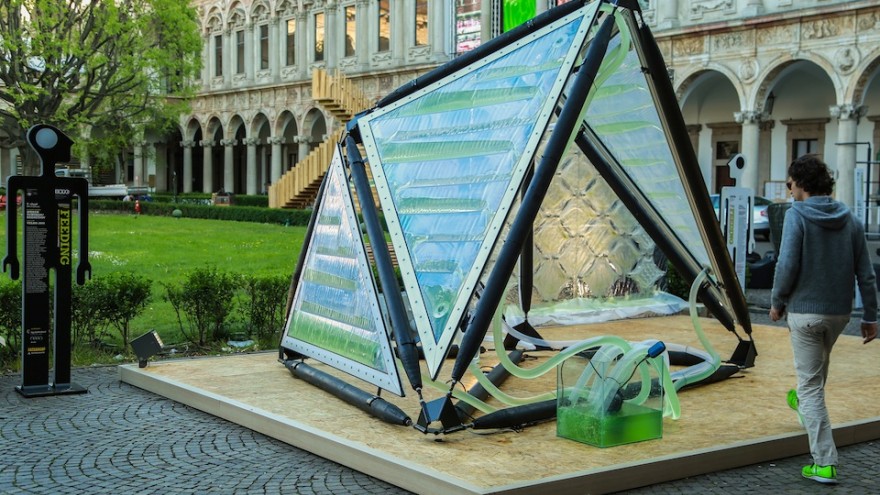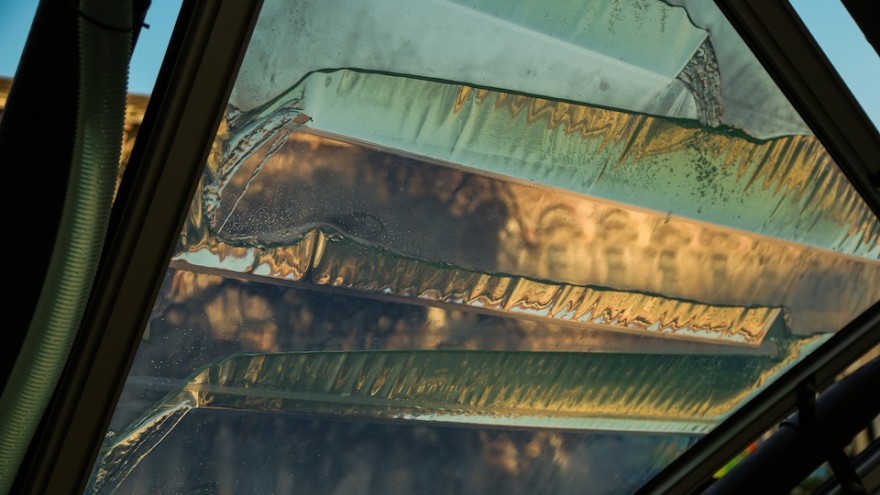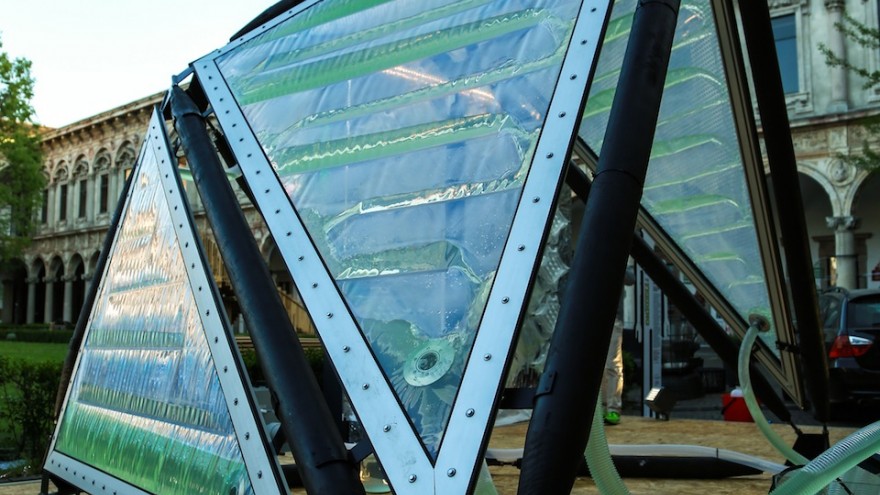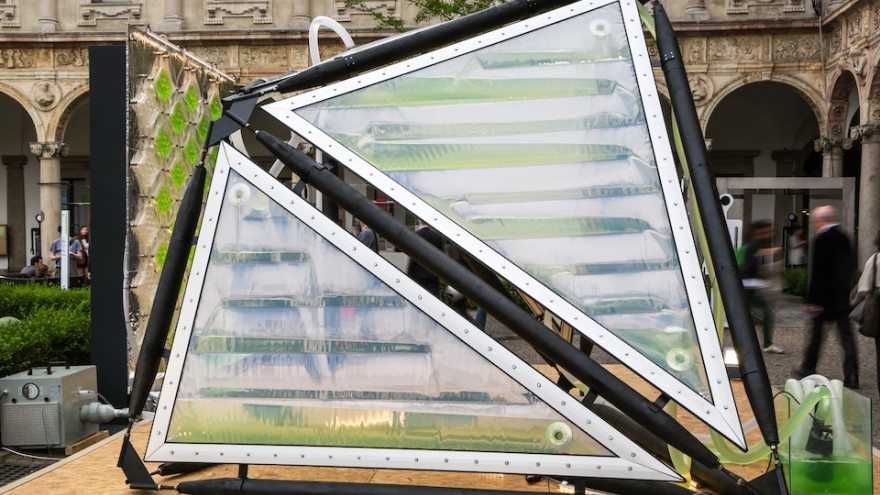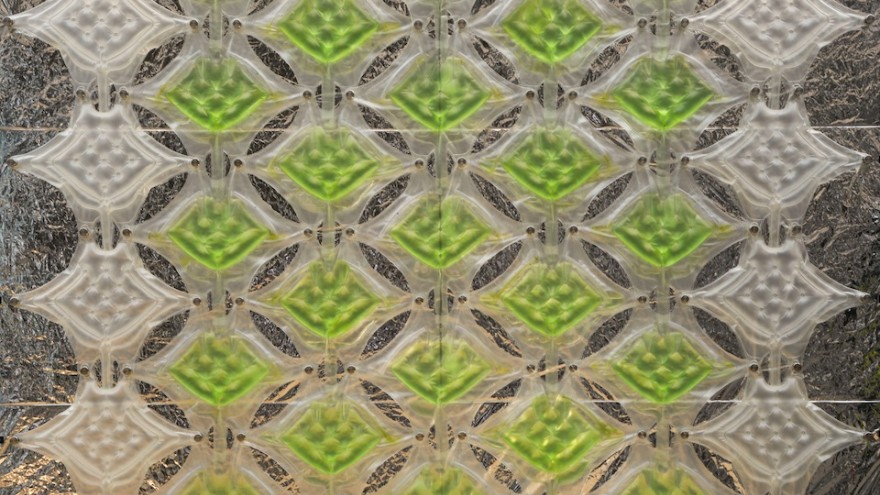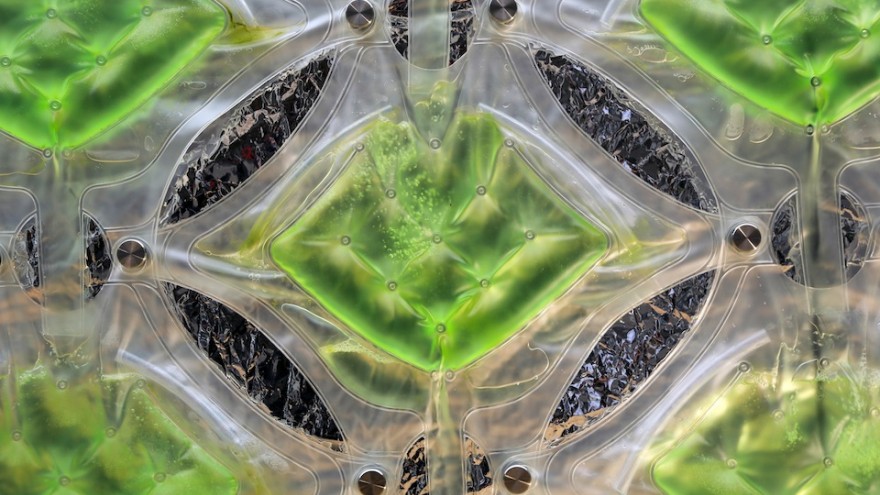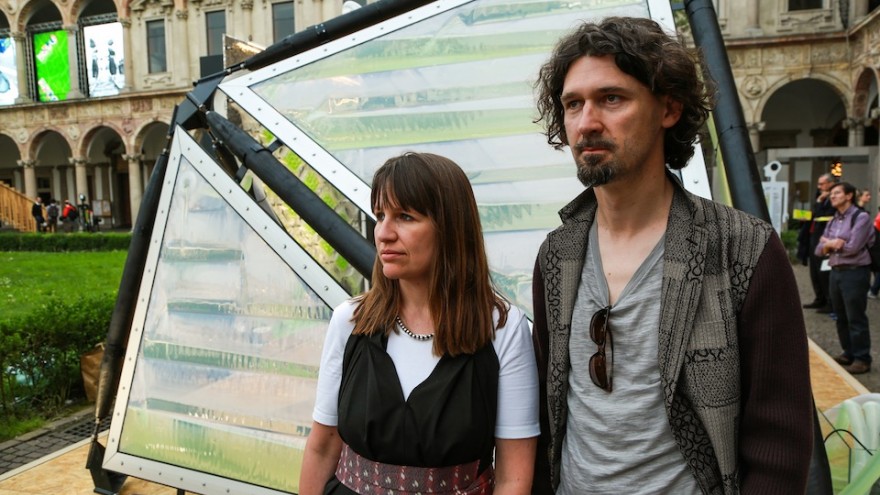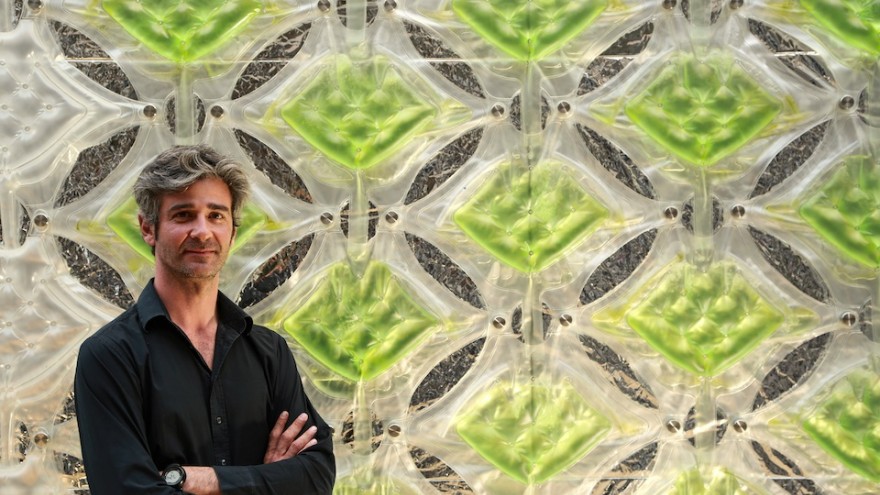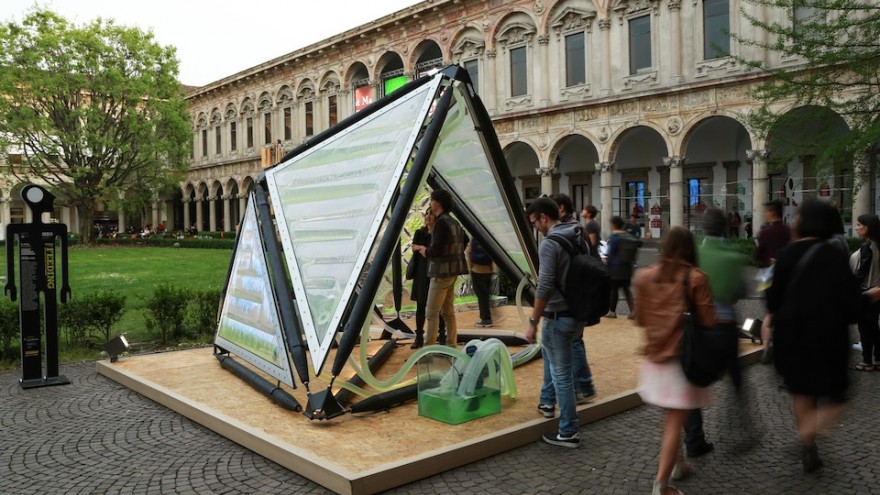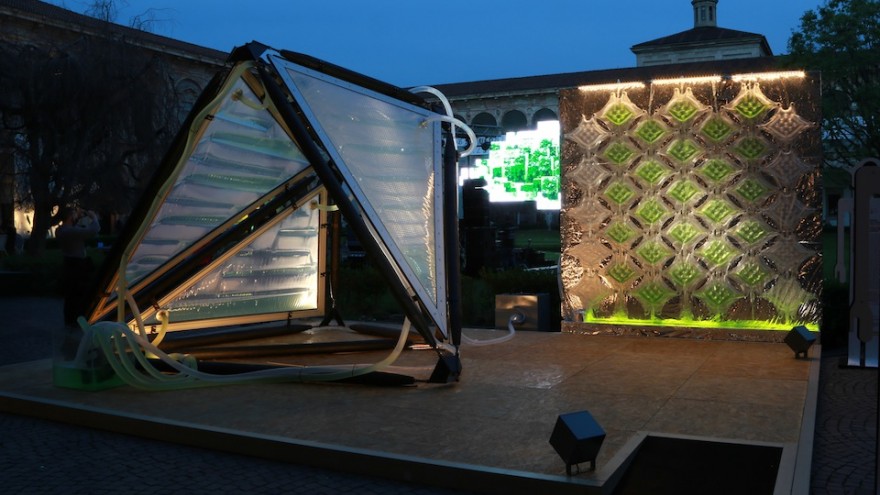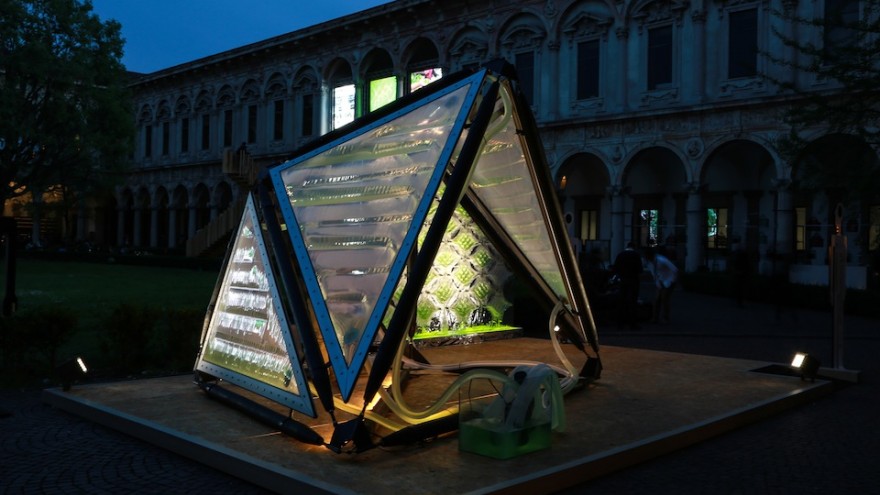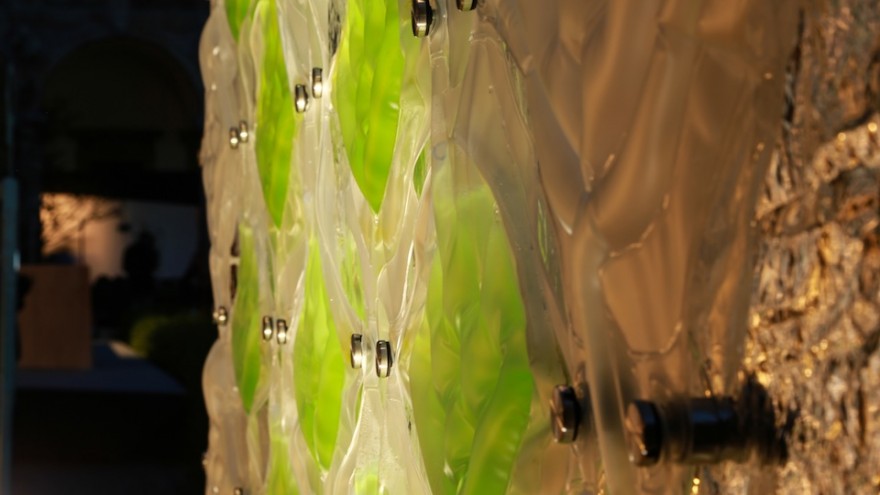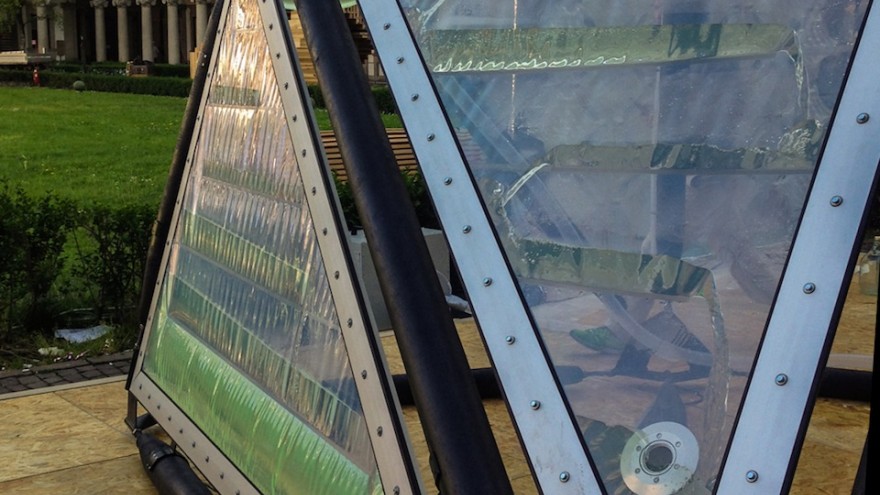Carlo Ratti is exploring how algae can represent an important part of creating a healthy and liveable planet.
Algae is the seemingly unlikely term that is being discussed at the heart of EXPO Milano 2015. As part of the Future Food District project, being developed by Carlo Ratti Associati at the central crossroads of the EXPO site, the pavilions’ facades and canopy utilise new systems of micro-algae, designed by Cesare Griffa and ecoLogicStudio. Two prototypes – full-scale models of the façade and canopy – were showcased as part of the exhibition Feeding New Ideas for the City at this year’s Salone del Mobile. The prototypes constitute a revolution in building integrated farming and urban agriculture.
The functioning principle of the prototypes is based on the exceptional properties of micro-algae organisms, which are ten times more efficient photosynthetic machines compared to large trees and grasses. The façade and canopy currently being developed for EXPO Milano 2015 develop a natural manmade ecology and explore the use of algae as an integrated architectural cladding and urban agricultural system, says Ratti, curator of the Future Food District.
As micro-algae is known to perform an important photosynthetic activity through absorbing considerable amounts of carbon dioxide, producing oxygen and growing into biomass, Ratti and his team hope to use and transform the results of these processes into energy, cosmetic, pharmaceutical and nutraceutical products.
The Future Food District project looks at how buildings and architectural surfaces could be used as an incredible resource of space. Urban facades and roofs represent billions of square meters that instead of being made of an inanimate material such as concrete could become clever photosynthetic surfaces that respond to the current state of climate change.

